Night owls and hopeless romantics—this one’s for you.
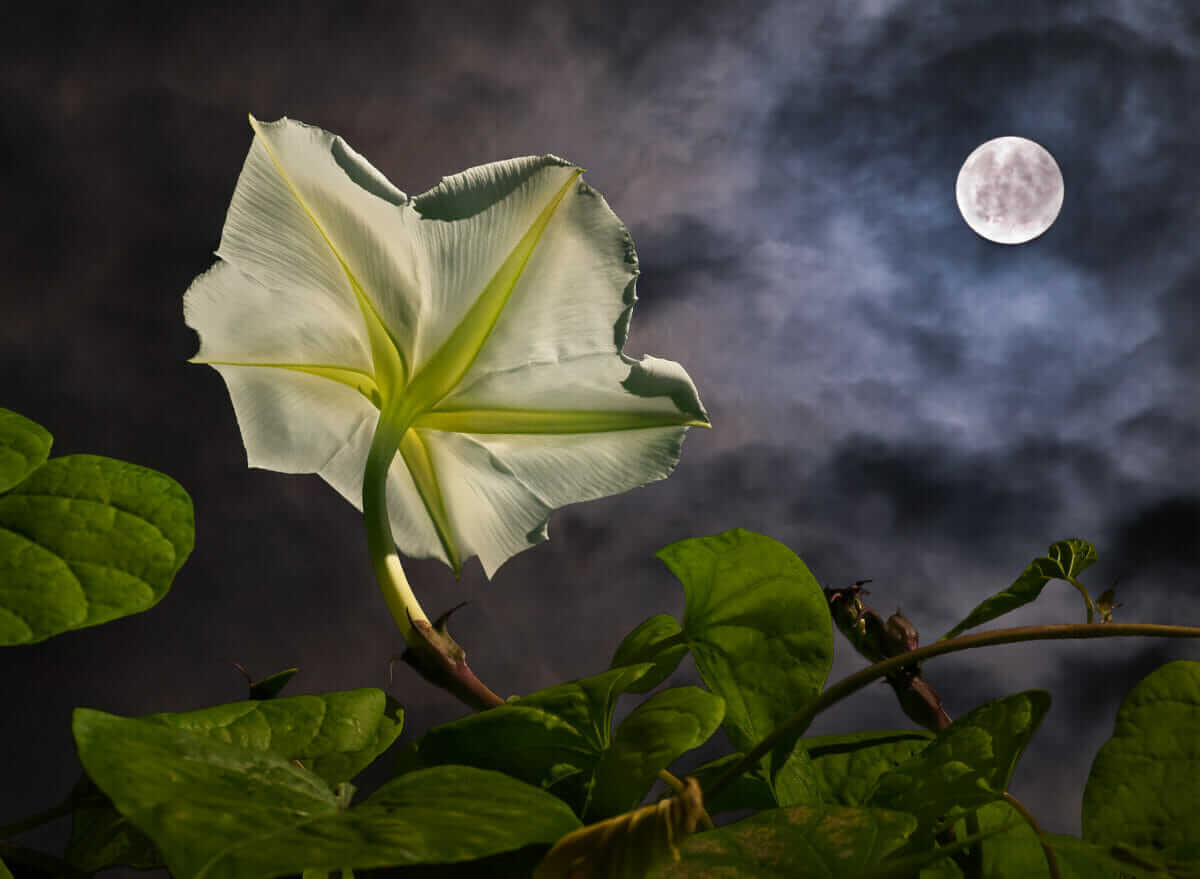
The journey that exists in the garden is one that is gratifying, taxing and even full of comfort. So, after many months of nurturing tiny seeds and watching them grow into an abundance of fruit, vegetables or ornamental blooms, it’s only natural to want to share the final product with others.
While those who garden for aesthetic purposes will likely opt to show off their zinnias, daisies and marigolds under the shining sun, the innovation of the moon garden provides an alternative to growers who want to cultivate something that shines in all its glory at night.
Moon gardens are typically a monochromatic collection of white or pale flowers and plants with silvery or reflective foliage. The idea is that choosing plants of lighter shades will reflect the light of the moon and stand out against the dark night sky. To design a garden that offers a full sensory experience, you can also choose plants that give off sweet scents and plants that bloom at night, which attract nocturnal pollinators such as bats and moths.
Interested yet? If so, here’s our compilation of tips, tricks and a guide to various moon garden plant candidates that will help you create your own.
Pick Your Site
When choosing a plot of land for your moon garden, select an open area that has maximum exposure to the night sky. You should avoid locations with tall trees that have the potential to obstruct views of the moon. Ideally, this spot is one that can also be viewed from a patio, porch or through a window from inside your home.
If you’re limited on outdoor space, you can include elements of a moon garden in an existing landscape or, alternatively, plant a small flowerbed.
Pick Your Plants
Depending on what you’re trying to achieve in your moon garden, there are several options you can mull over. We’ve simplified your selection process by creating plant profiles that break down characteristics and ideal growing conditions.
We also recommend choosing a variety of annuals, perennials and shrubs that flower at different times of the year so you can watch your garden evolve for as long as possible.
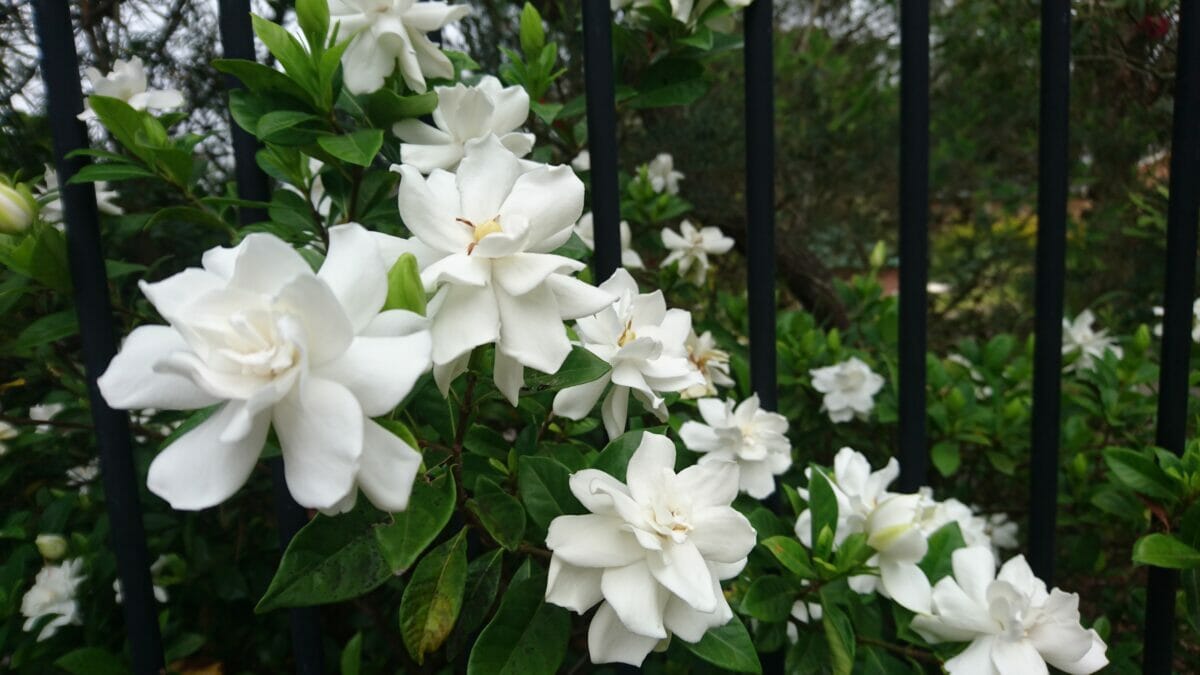
Photo courtesy of Shutterstock.
Gardenias
Otherwise known as cape jasmine, this perennial shrub develops white, fragrant flowers that have a reputation for giving off stronger scents at night. Gardenias prefer rich, acidic, well-drained soil and are moderately drought-tolerant. They grow best in USDA zones 7-11.
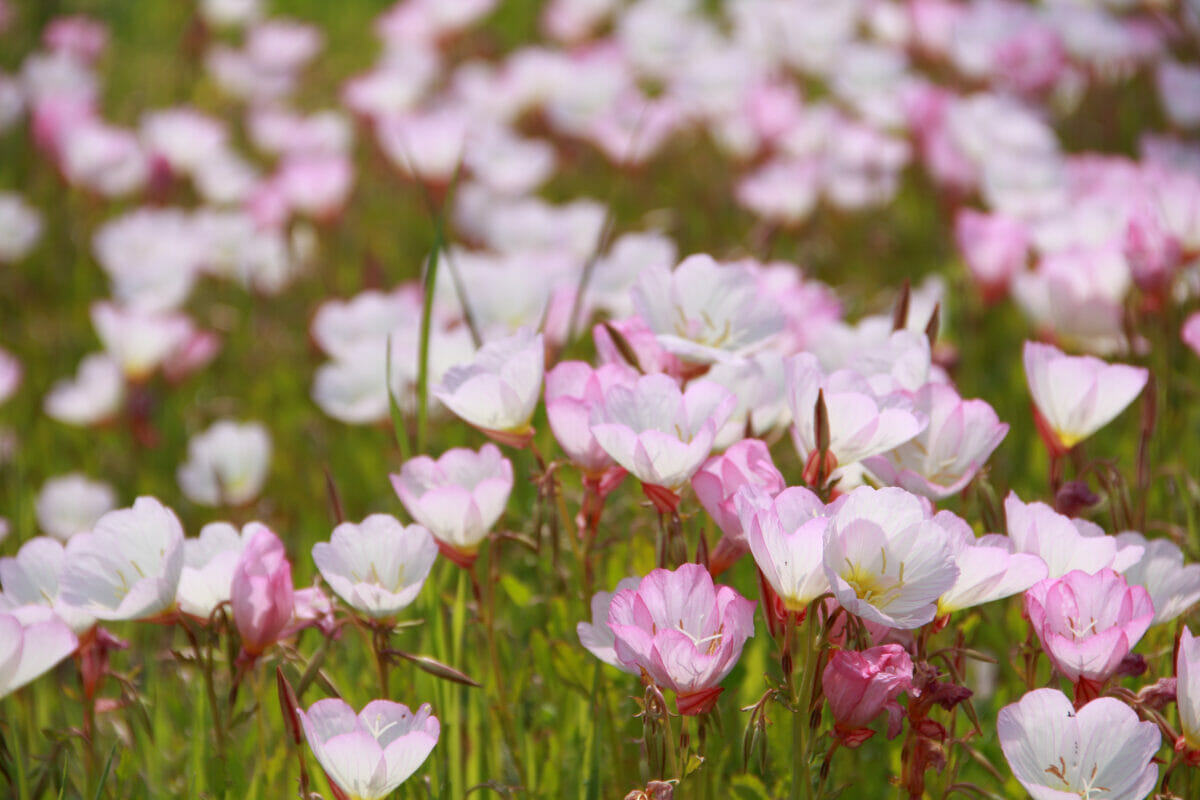
Photo courtesy of Shutterstock.
Evening Primrose
This perennial plant is a nighttime bloomer and is also quite fragrant. Although it is typically known for its shade of yellow, the plant also sprouts white and pale pink flowers. It prefers well-drained soil and is able to handle high pH levels. It grows best in hardiness zones 4-9. But please note, this plant is toxic to dogs and cats.
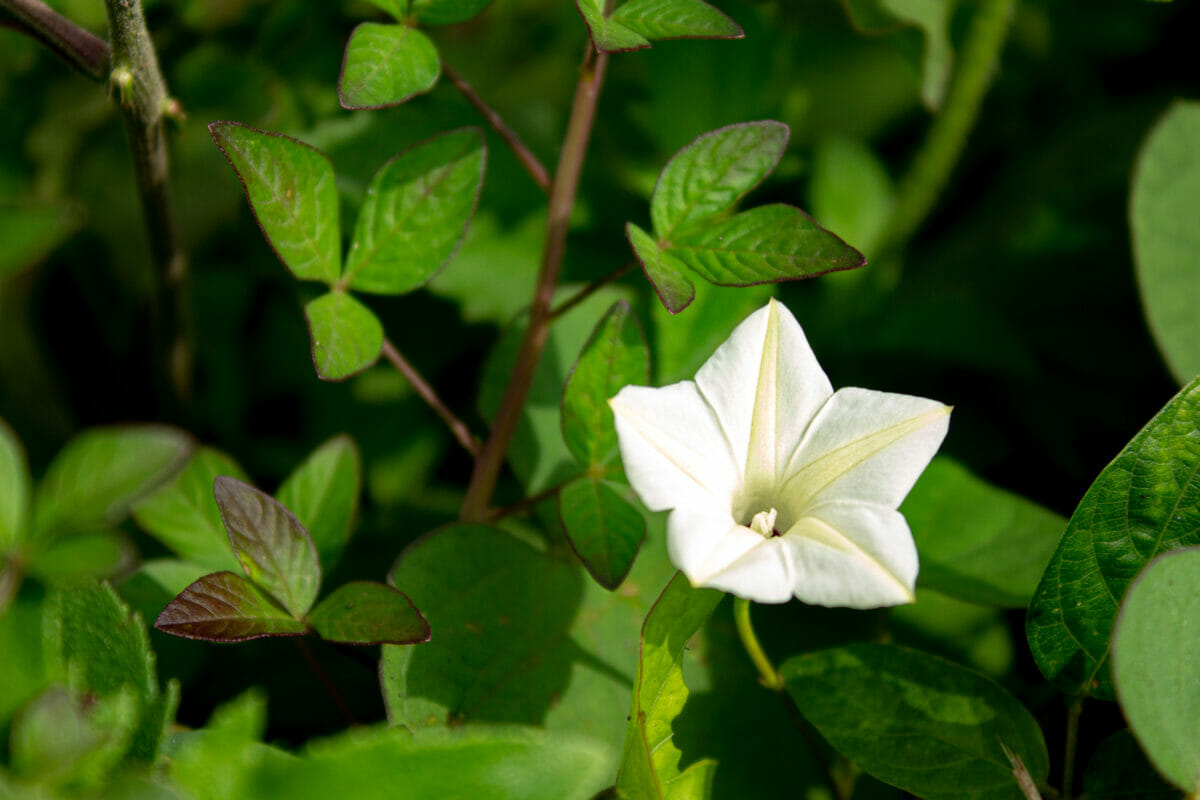
Photo courtesy of Shutterstock.
Moonflower
A moon garden wouldn’t be complete without moonflowers. This perennial vine can grow up to 15 feet long and thrives in warm climates as an annual. It’s nocturnal and has fragrant flowers that span four to six inches wide. It prefers moist, well-drained soil and blooms from July to October. Recommended USDA growing zones are 10-12.
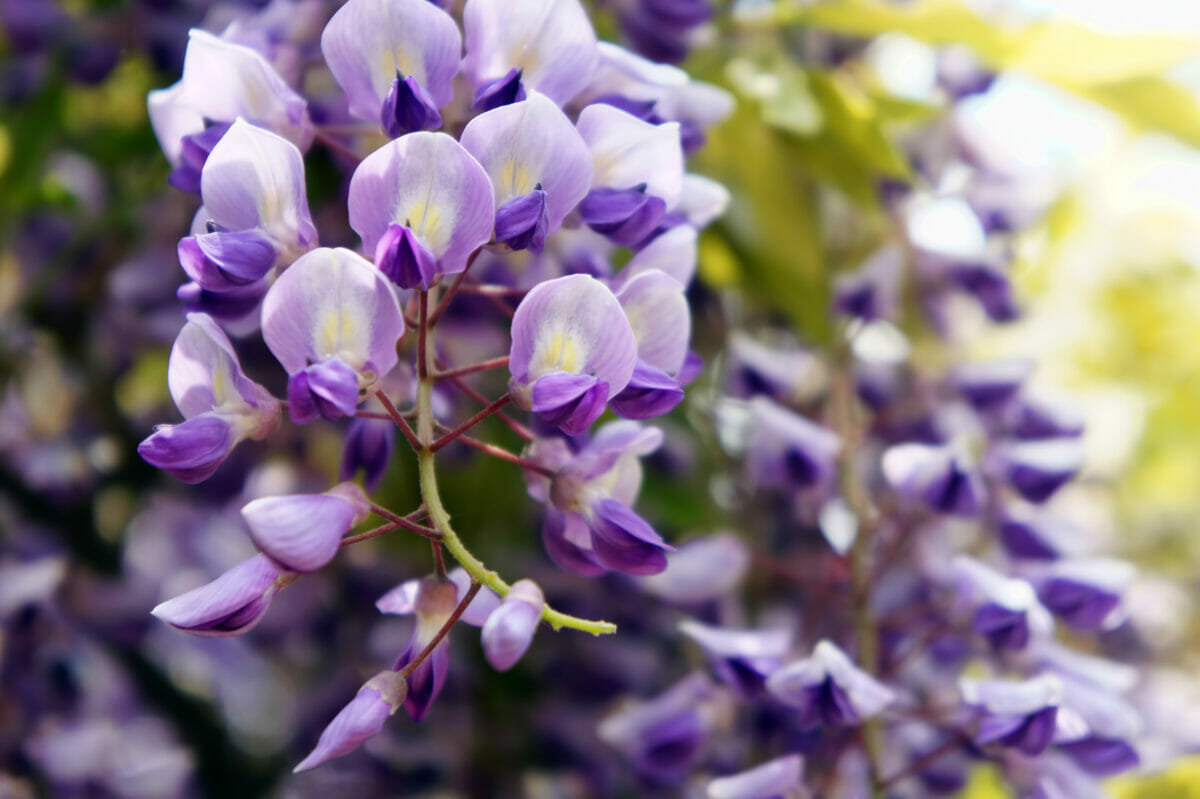
Photo courtesy of Shutterstock.
Japanese Wisteria
Japanese wisteria is another nocturnal vine that also gives off sweet scents. It can grow anywhere from 30 to 60 feet in length and has small flowers that bloom in clusters of either purple or white. Unfortunately, this perennial has a reputation for being finicky and can take several years before flowers develop, so either be willing to be patient or buy one to transplant that’s already in bloom. It can grow in hardiness zones 4 through 9 and prefers fertile, moist, well-drained soil.
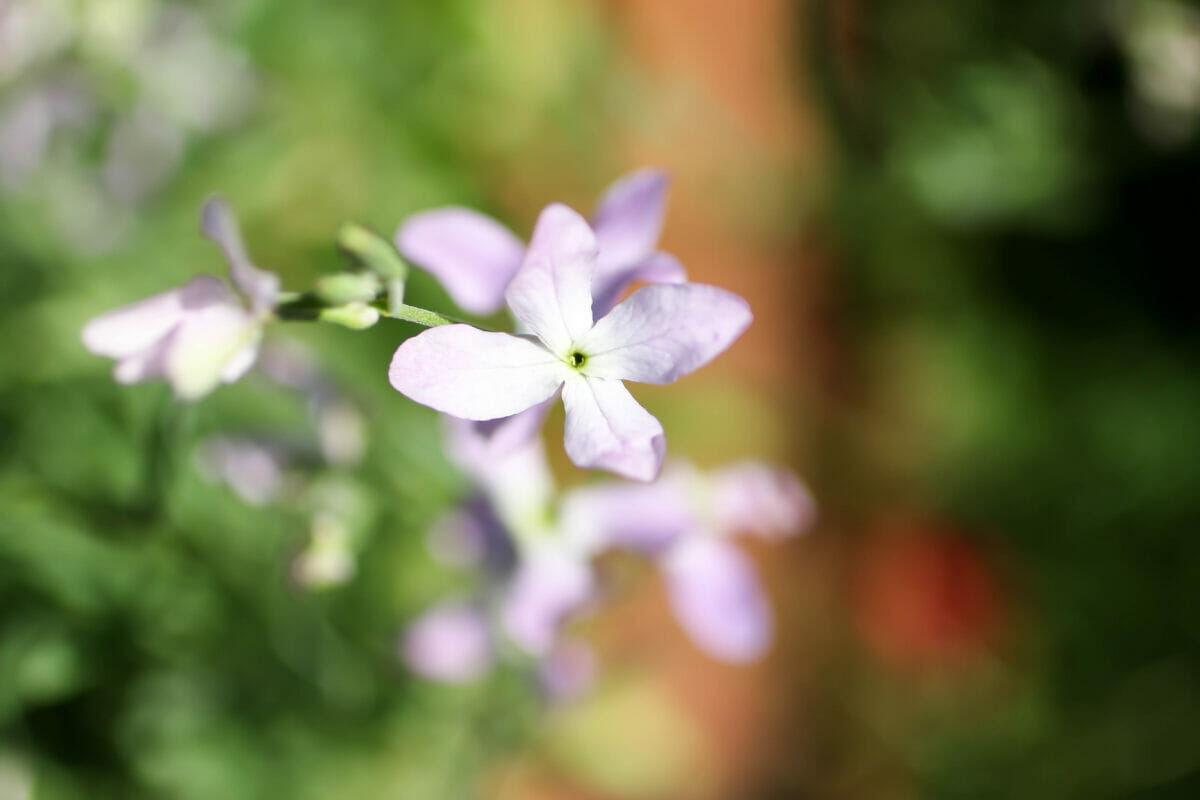
Photo courtesy of Shutterstock.
Night Phlox
Phlox is an ideal addition to the garden that can be planted in spring or fall. It’s a low-growing perennial with tiny white flowers that are almost star-like. These flowers attract many night time pollinators and give off a scent similar to honey or vanilla. It prefers moist, humus-rich soil that is well drained and grows best in USDA hardiness zones 4-8.
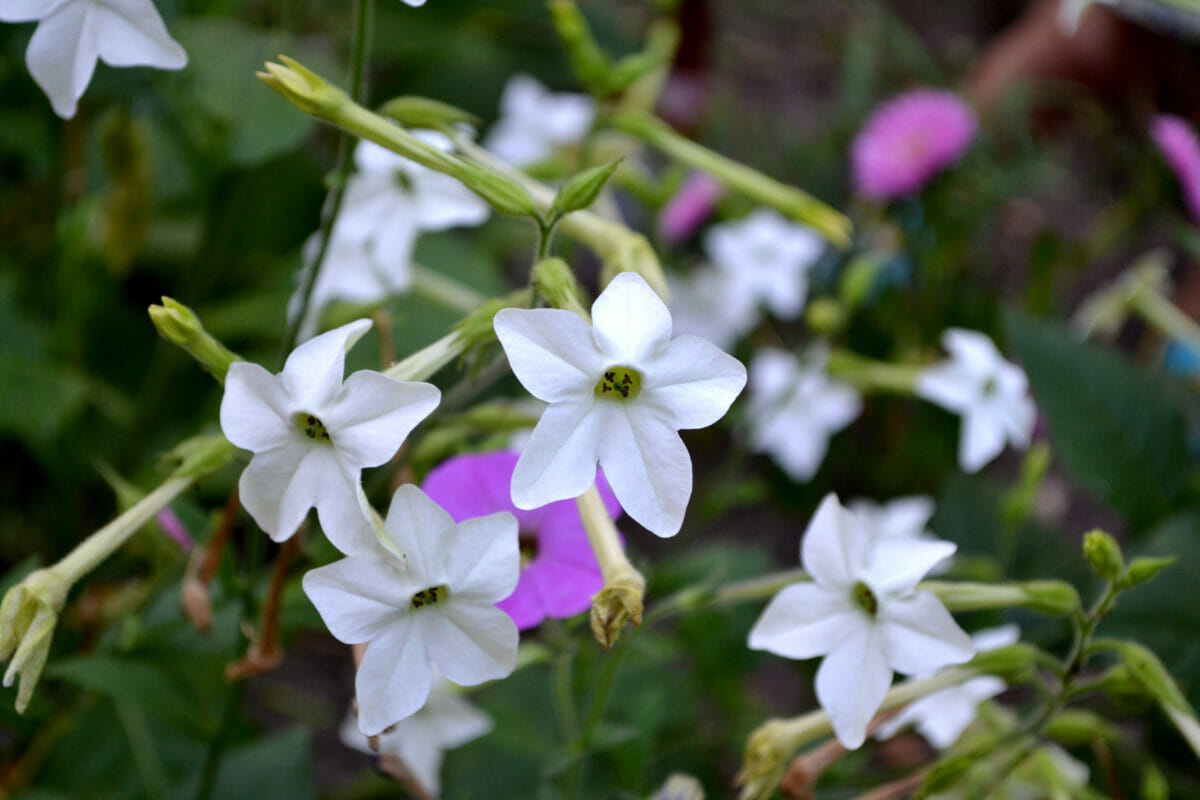
Photo courtesy of Shutterstock.
Nicotiana
Nicotiana is actually a species of tobacco and is also referred to as jasmine tobacco, sweet tobacco or winged tobacco. It’s an annual with white flowers that open after sunset. It has a bloom time of June until the first frost, prefers soil that is consistently moist and thrives in USDA zones 10-11.
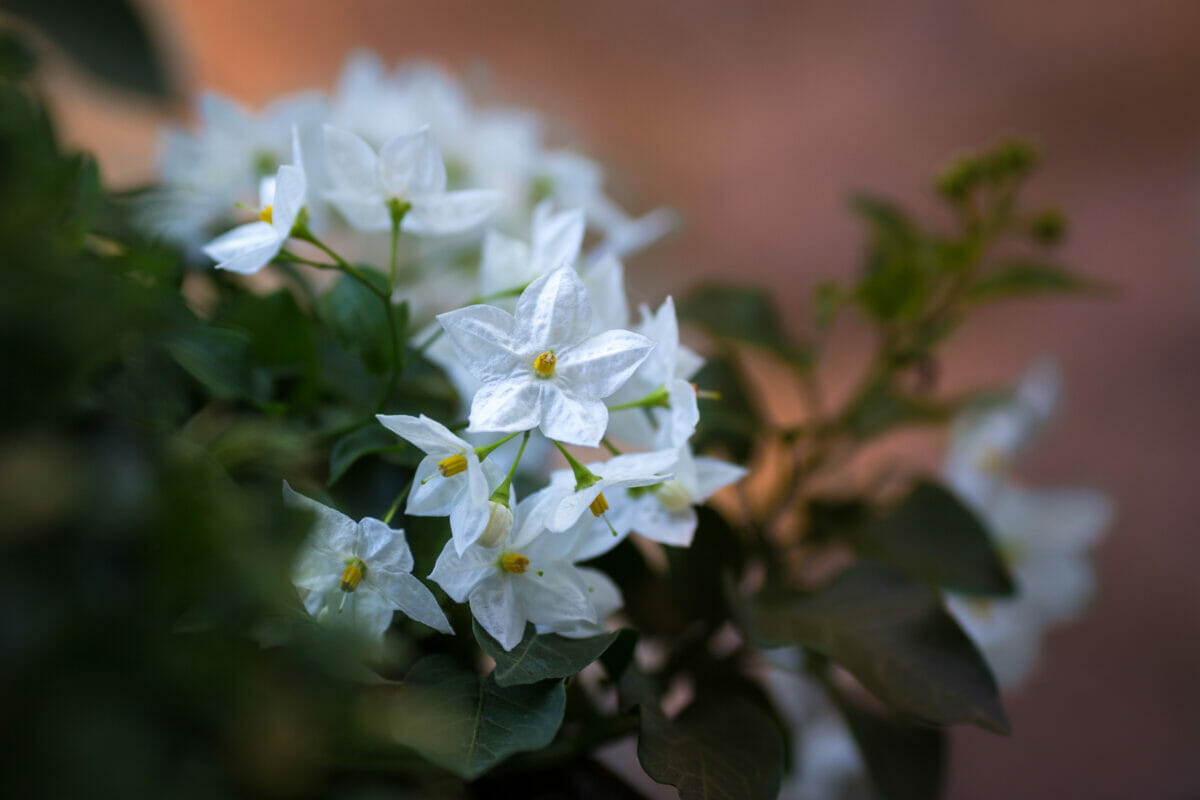
Photo courtesy of Shutterstock.
Night-Blooming Jasmine
Otherwise known as Lady of the Night, this shrub can reach anywhere from four to 13 feet tall. It sprouts small, tubular flowers and can be grown on a trellis. Before it grows flowers, the plant develops small, white berries that are toxic to humans and many animals if ingested. We recommend you plant night-blooming jasmine in well-draining sandy soil. It is best suited for zones 8-11.
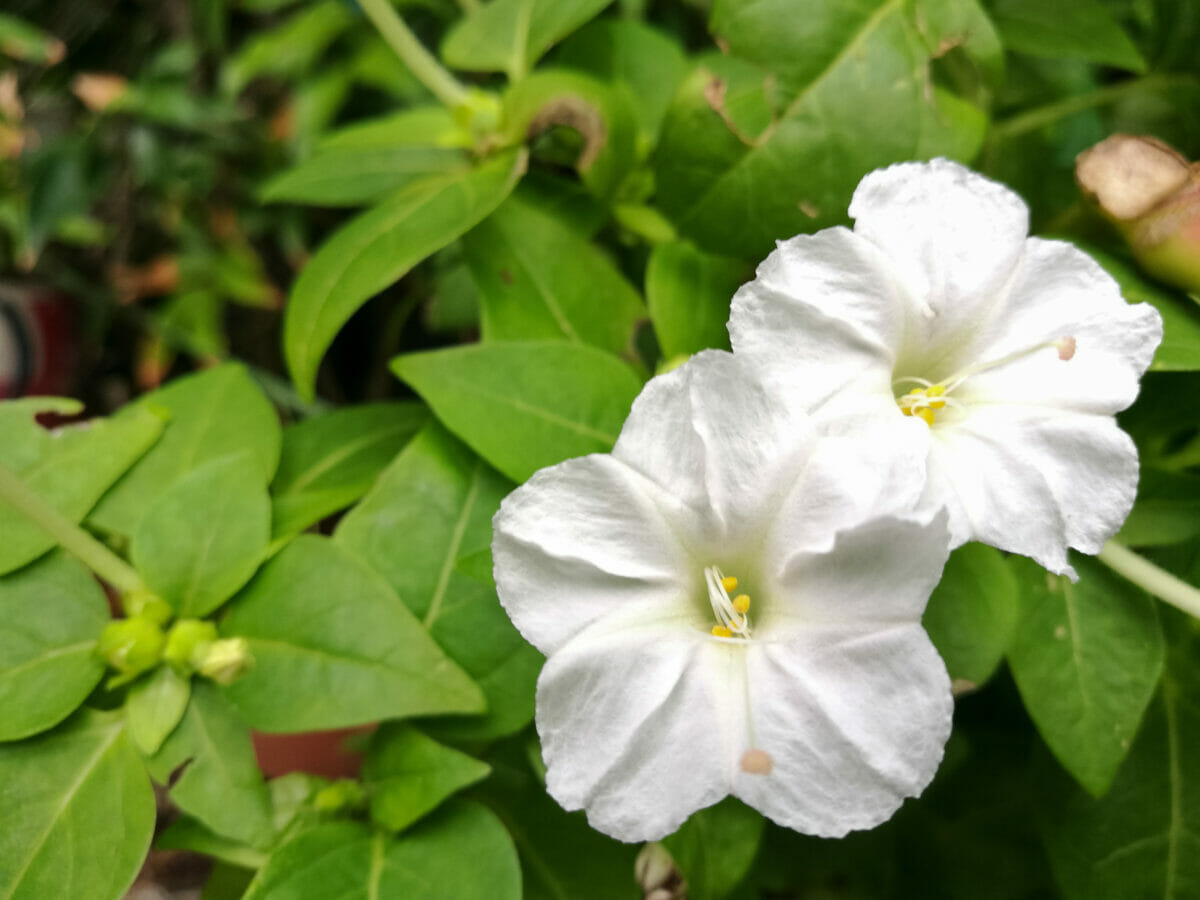
Photo courtesy of Shutterstock.
Four O’Clocks
Four O’Clocks bloom in the late afternoon and evening during summer and fall seasons. They come in a variety of colors such as pink, red and yellow, but for a moon garden, you’ll want to choose white. Their scent has been described as being lemony. Keep your pets away from this plant, as it can be toxic if ingested. Four O’Clocks prefer rich, loamy soil with neutral to slightly acidic pH level. It can grow in hardiness zones 9-11.
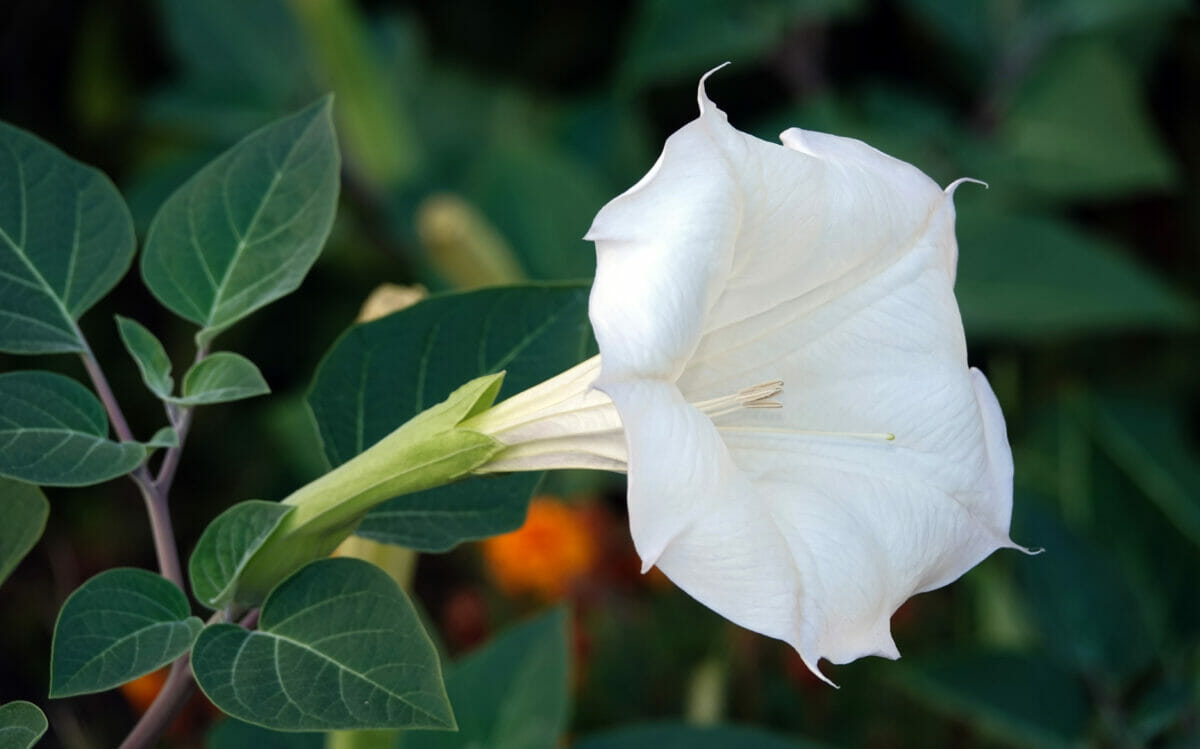
Photo courtesy of Shutterstock.
Datura
Add some variety to your garden with these trumpet-like flowers and their honeysuckle scent. These plants grow three to four inches tall and four feet wide. Datura flowers can get up to seven inches long and four inches wide. It thrives in loamy, well-drained soil and can be grown as an annual in zones 5-7 or as a perennial in zones 8-10. Note: If you choose these plants and have young kids and pets, keep in mind that they are poisonous. Those who’ve ingested this plant have reported tachycardia, muscle stiffness, temporary paralysis and damage to organs such as kidneys, heart and lungs.
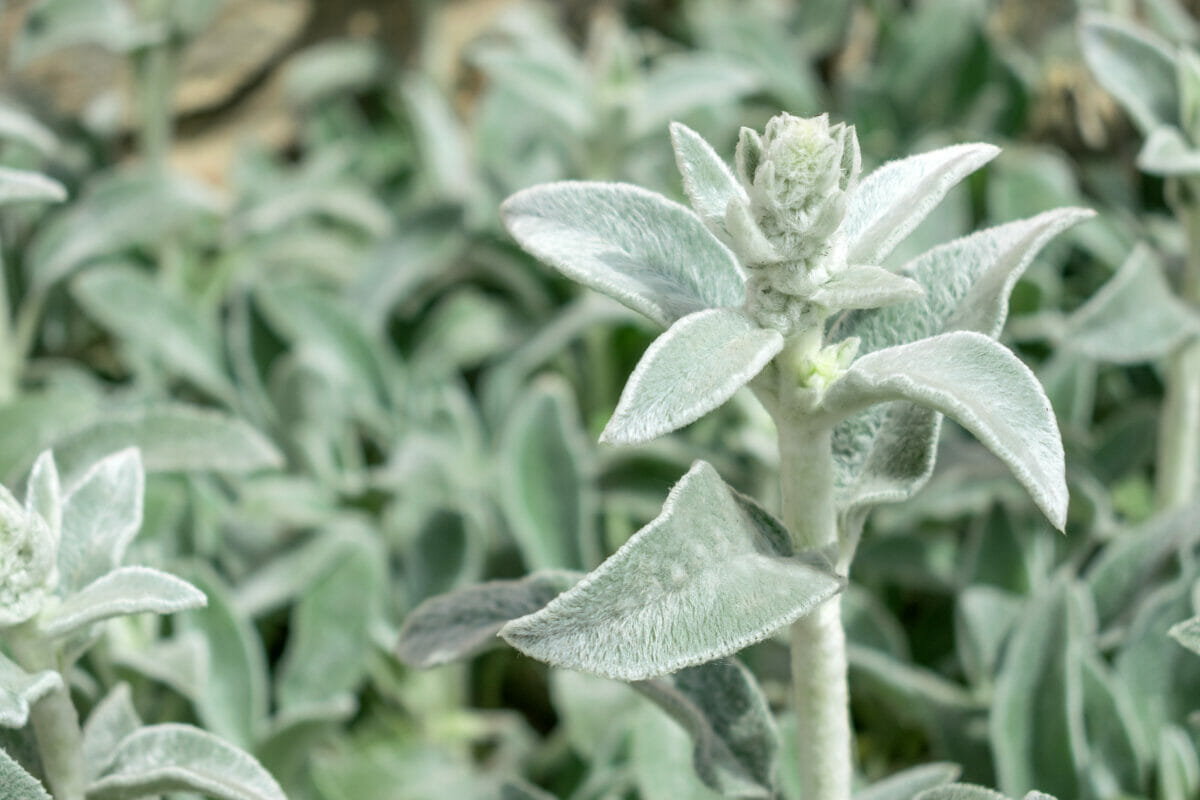
Photo courtesy of Shutterstock.
Lamb’s Ear
Lamb’s Ear has silvery foliage that will stand out under the moonlight. Although this plant only grows to be a foot tall, it can sometimes develop light purple flowers on spikes that can reach a height between 12 to 18 inches. It is best suited for hardiness zones 4-7, and it can be planted in slightly acidic soil that is well draining.

Photo courtesy of Shutterstock.
Climbing Hydrangeas
Here’s another flowering vine option. The Climbing Hydrangea can be trained to grow up on anything from a tree to a fence to a trellis. Its tiny white flowers, reminiscent of lace, take about three to five years to bloom and the plant itself can reach a height of as much as 50 feet at maturity. This perennial plant prefers moist, well-drained soil and is ideal for hardiness zones 4-8.
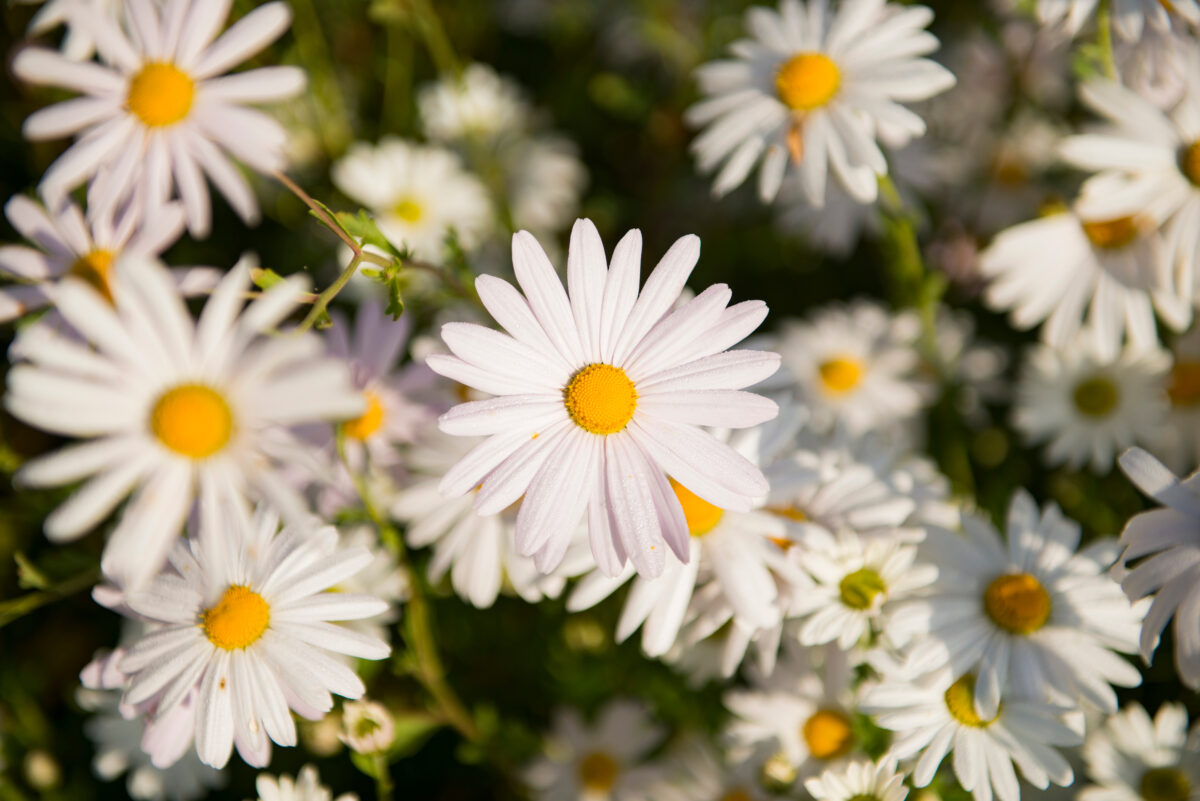
Photo courtesy of Shutterstock.
Shasta Daisy
Shasta Daisies are just like daisies except they’re smaller, grow in tighter bundles and shine bright at night. They have a bloom time that spans from early spring to late autumn and can grow to a size of about two feet tall and one to two feet wide. They are fairly low maintenance and can grow well in any type of soil, but they fare best in hardiness zones 4-9.
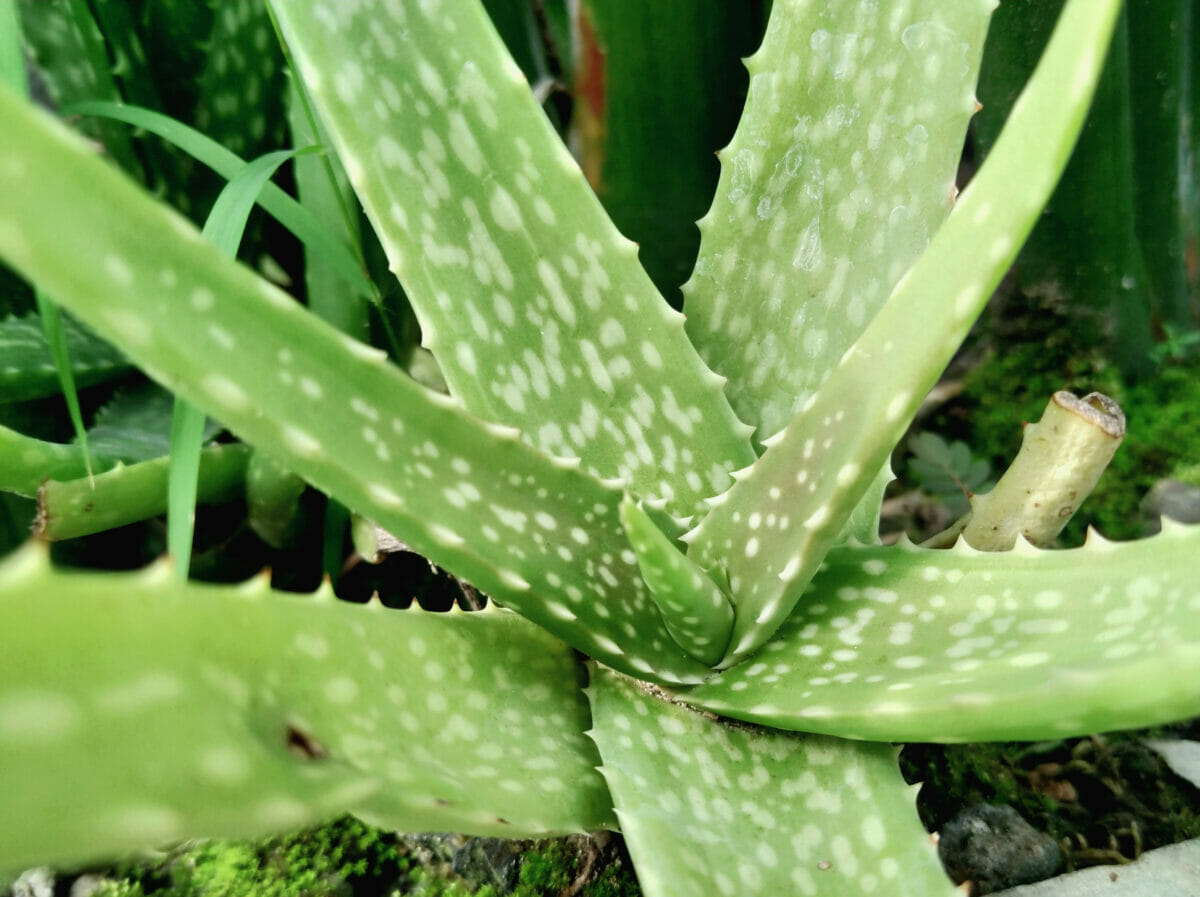
Photo courtesy of Shutterstock.
Aloe ‘White Beauty’
A twist on your regular aloe vera plant, this one is speckled white. It’s important to ensure that your aloe is planted in soil that is well draining as it is fairly susceptible to root rot. This perennial succulent will eventually develop bright orange, tubular flowers in the late spring to early summer. It grows best in USDA hardiness zones 8-11.
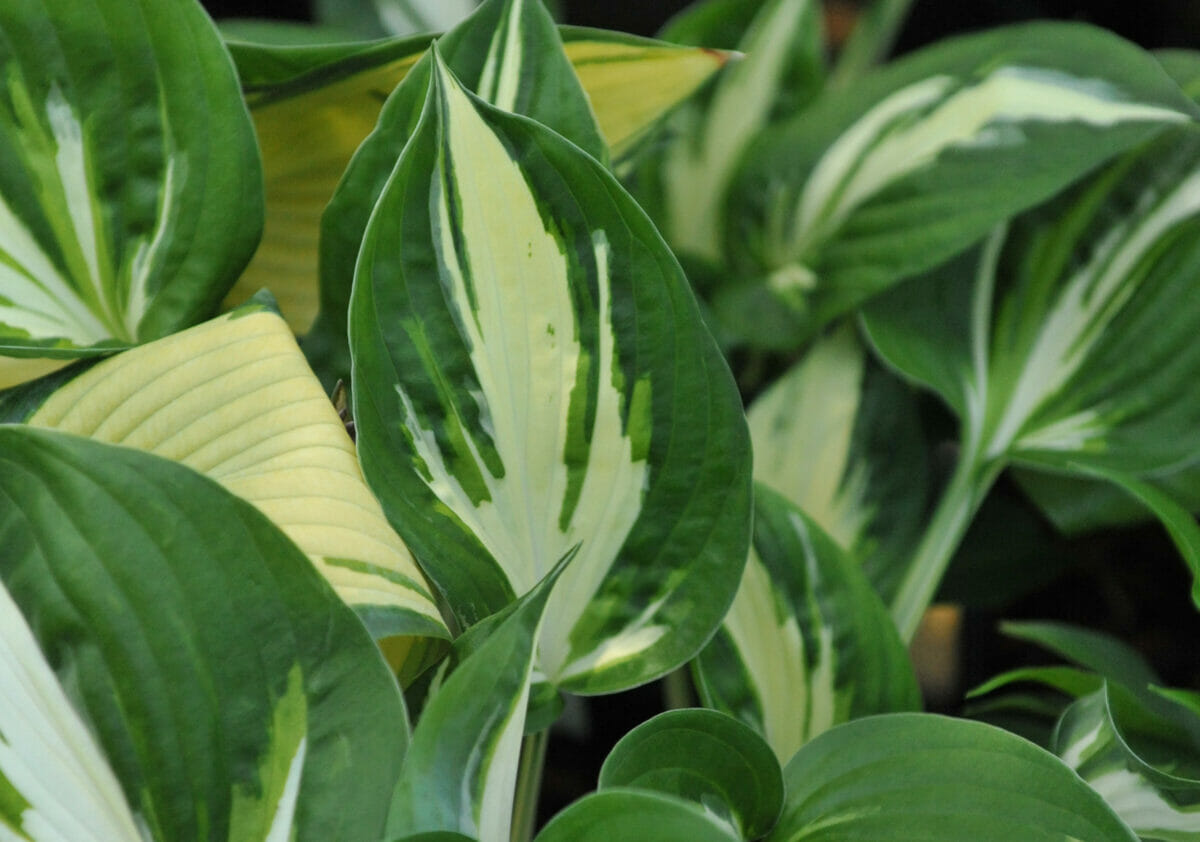
Photo courtesy of Shutterstock.
Variegated Hosta
With stripes of yellow, cream and white on their leaves, Hostas can make for an interesting contrast to pure white blooms. This plant grows fairly low to the ground, but it spans a distance of between one and three feet. It prefers loamy soil with slightly acidic to neutral pH levels and hardiness zones from 3-9.
Pick Your Accessories and Construct Your Space
It’s not just flowers that can reflect moonbeams. For example, white pebbles or marble can also help draw more light into your space. You can use them to build a path inside or around your moon garden. If you have your garden growing in front of a fence or a wall, you might consider painting it white to add to the monochromatic theme.
Decorative objects or garden ornaments made of reflective materials or glass can also make for great additions. Some moon gardens even have bird baths or fountains for added ambiance.
For those choosing to add some lights to their moon garden, it’s best to take a minimalist approach and ensure they aren’t too bright. Candles, string lights or solar light stakes can be effective on nights when it’s overcast or there isn’t a full moon. But if there’s too much light, it can overpower the natural lunar glow.
Once you’ve determined where you’re going to start your moon garden and what’s going to go in it, consider drawing up an outline so that everything has a place. If you’d like a little more guidance and don’t want to put pen to paper, Farmer’s Almanac offers a free garden planner that puts together a personalized planting chart and provides options for garden designs.
Thank you for this informative post. I have been putting moon garden ideas aside for a few years now and haven’t gotten around to doing anything with them. This is the first article I’ve seen on this particular flower garden and I have saved it for another read. I will be planning for my Spring gardens this winter and this cud be the year I finally get around to planting my long awaited moon garden!
Very cool idea and great plant recommendations…except Chinese/Japanese Wisteria. This plant is horribly invasive and destroys native habitat. For your readers, be cautious: http://www.ecosystemgardening.com/chinese-wisteria.html.
Otherwise, neat, and I hope to incorporate the other ideas into our farm landscape. Thanks for considering my feedback.
Thank you for this article. I’ve sent the link to several friends. It’s a hit!
Our first year discovering a moon garden. We just took a 4 minute night-time tour at our farm to search for moonflowers! https://www.instagram.com/p/CT0k4riKgoF